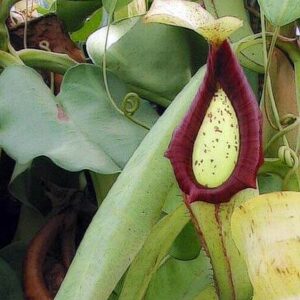
What is a Pitcher Plant?
Pitcher plants, with their unique and captivating pitchers, have emerged as popular houseplants in recent years. These fascinating flora are not your average houseplants; they are carnivorous, relying on insects for nutrients instead of soil-based fertilisers. Carnivorous plants are a truly remarkable example of adaptation and survival in the natural world.
What do Pitcher plants eat?
The allure of pitcher plants lies in their unique method of acquiring sustenance. These plants attract unsuspecting insects with their brightly coloured pitchers, which often mimic nectar-producing flowers. Once an insect ventures inside, it encounters slippery walls, making escape difficult. The downward-pointing hairs further hinder the insect’s progress, guiding it towards the digestive juices that await at the bottom of the pitcher. These digestive juices break down the unfortunate insect, providing the pitcher plant with essential nutrients.
Pitcher Plants’ Living Conditions
To thrive, pitcher plants require a suitable environment that mimics their natural habitat. These plants originate from humid, warm regions, often in the vicinity of orchids. Consider these factors when providing your pitcher plant with the ideal home:
- Light: Pitcher plants need bright light, but should not be exposed to direct sunlight. A partially shaded location near a window or doorway is ideal.
- Humidity: Maintain a humid environment by misting your pitcher plant regularly with tepid water. Placing the plant on a tray filled with wet pebbles can also help raise humidity levels.
- Temperature: Most pitcher plant varieties can tolerate temperatures as low as 10°C (50°F). However, it’s best to keep them in temperatures above 15°C (60°F).
Growing Medium and Repotting
Pitcher plants prefer a loose, well-draining potting mix. A combination of bark chippings, compost, and a small amount of moss (preferably from a sustainable source) provides the ideal growing medium. To prevent waterlogging, ensure the pot has drainage holes. Some growers recommend incorporating a small amount of charcoal into the mix to maintain soil acidity and prevent waterlogging.
Additional Feeding for Your Pitcher Plant
While pitcher plants can derive nutrients from insects they capture, providing supplemental feeding can enhance their growth and development. During the spring and summer months, offer your pitcher plant a diluted liquid fertiliser once a month. Select a balanced fertiliser suitable for carnivorous plants.
With proper care and attention, your pitcher plant can thrive in your home, adding a touch of the exotic and fascinating world of carnivorous flora to your décor. Embrace the unique beauty and adaptability of these remarkable plants, and witness their ability to capture, digest, and utilise insects for their nourishment.


